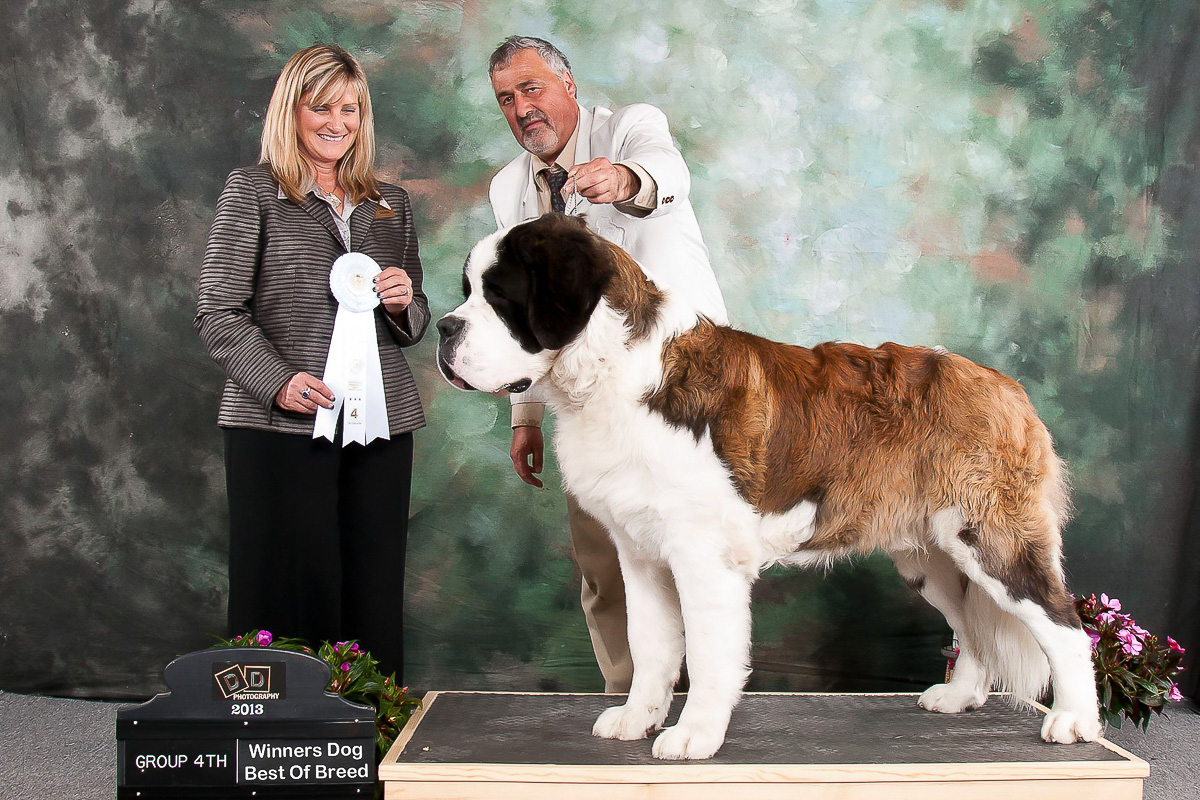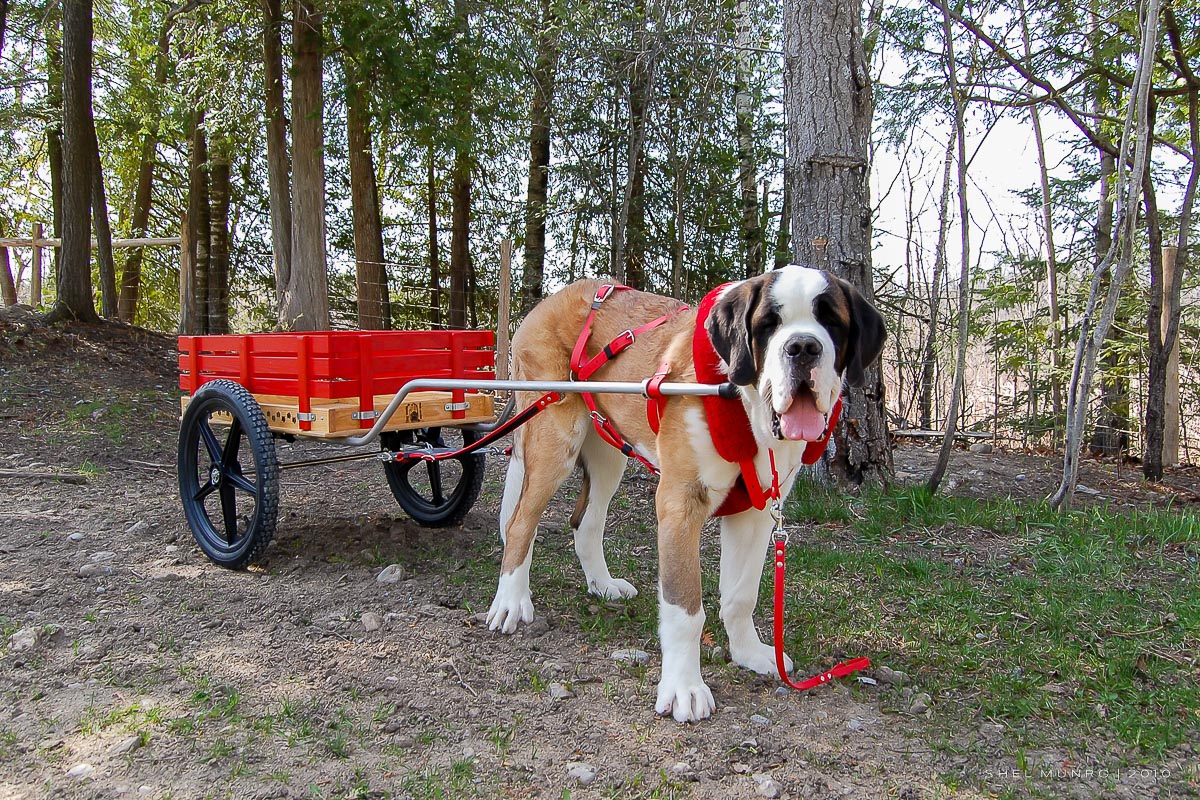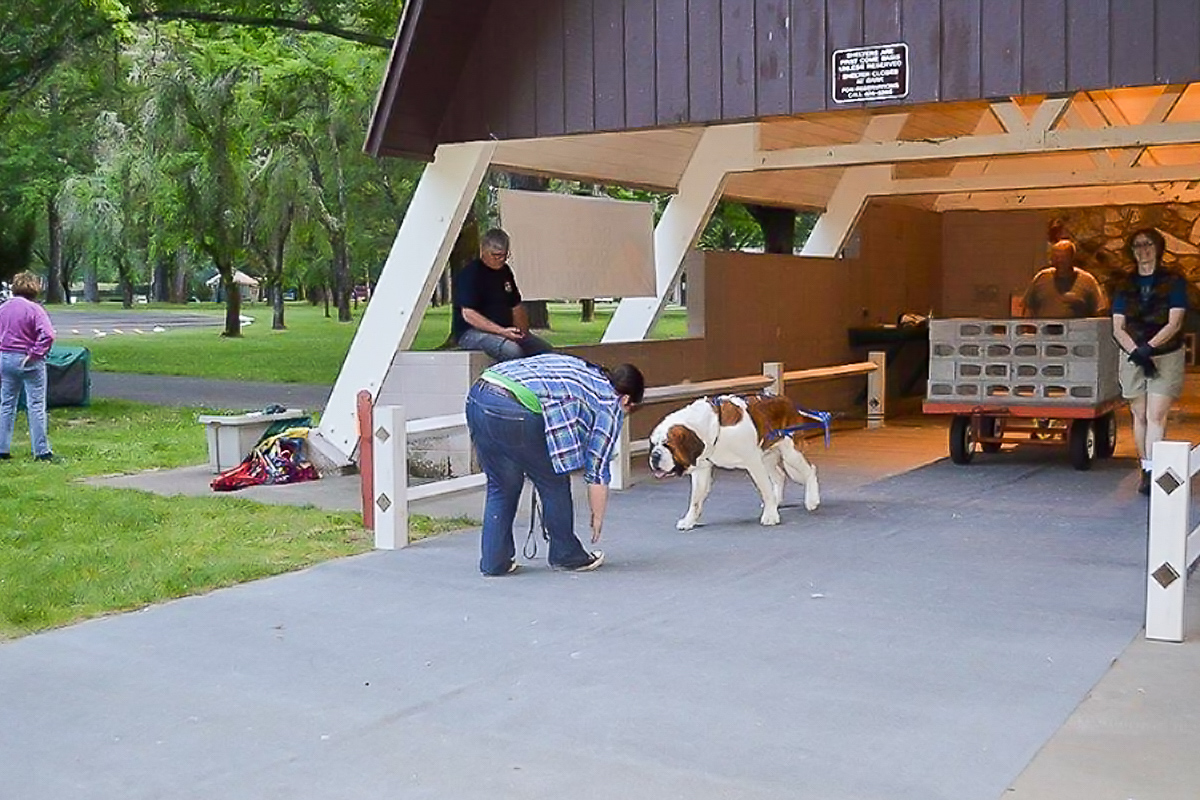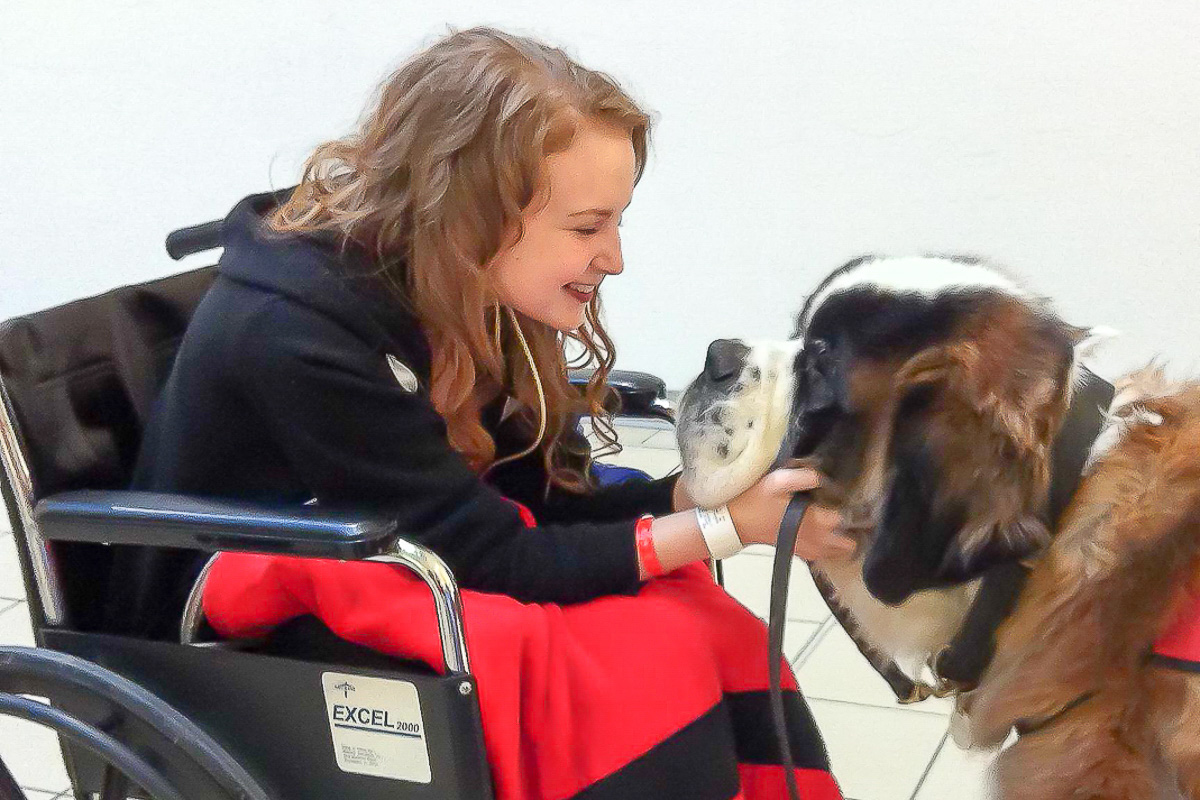Fun With Saints
The Saint Bernard is a working breed. They are a versatile worker, both strong and intelligent. While they excel at traditional activities such as carting, obedience and agility among others, their gentle nature makes them excellent therapy dogs. We encourage you to participate in an activity with your dog – not only will you have fun with your Saint – you will both be happier and healthier.
Conformation
A conformation show, also referred to as a dog show, is not a comparison of one dog to another, but a comparison of each dog to the ideal breed type as outlined in the breed standard. Dogs compete at dog shows to earn points championship titles. Owners may compete with their dogs, or a professional handler can be employed to take the dog into the ring. Show dogs must be a minimum of six month old and have to remain intact to be eligible with the exception of Altered Classes at Specialties.
Obedience
At an obedience trail, the dog and handler perform various predefined exercises, which are evaluated and scored by a judge. The dog must demonstrate basic proficiency in order to receive a passing score. All dogs that receive a qualifying score earn a leg towards an obedience title. When a dog has accumulated the necessary number of legs for a given title, the Canadian Kennel Club (CKC) will issue a certificate to the dog’s owner recognizing that accomplishment. Training for obedience trials can be a fun and challenging activity for dog and owner.
Carting
The use of dogs as draft animals has a long history. Although using dogs as draft animals is no longer a necessity, more and more people are discovering the joys of involving the family dog in this sport. Teaching your Saint Bernard to pull a cart or wagon is a rewarding and enjoyable activity. The most important things you need to get started is a mature dog (18 months or older) in good physical health, a quality draft harness, a cart or wagon, and of course, your time and patience. Draft Dogs can be titled by the Canadian Kennel Club.
Agility
Agility is a sport in which a handler directs a dog through an obstacle course in a race for both time and accuracy. Dogs run off leash without food or toys as incentives. The handler cannot touch the dog or obstacles during the trial. Consequently the handler’s controls are limited to voice, movement, and various body signals, requiring exceptional training of the dog and coordination of the handler. Agility is a very exciting sport to participate in, and is also a great spectator sport.
Weight Pulling
Weight pulling involves a dog pulling a cart or sled loaded with weight a short distance within 60 seconds. Dogs compete in weight classes against other dogs their size. Dogs that compete in weight pull are athletes. It is imperative that competing dogs be conditioned prior to the event. The dogs must be trained to pull – simply put – they must pull because they want to pull. The use of treats, toys or physical encouragement is not allowed during the competition. Training for this sport should not begin until the dog is physically mature (about two years old).
Tracking
In tracking, nose work or sporting detection, the dog must locate a hidden target scent within a certain area and alert the handler to its location. The sport requires a true partnership between human and canine to perform an efficient search. The activity promotes confidence in the dog and provides intense mental stimulation. The Canadian Kennel Club (CKC) and the Sporting Detection Dogs Association (SDDA) offer tracking titles.
Therapy Work
A therapy dog is trained to provide affection and comfort to people in hospitals, retirement homes, nursing homes, schools, and hospices. This is an activity that is very rewarding for dog and handler. Whether you are visiting children at school, patients in a hospital, or the elderly in a nursing home, you will find you are left with an incredible sense of fulfillment. The joy these dogs bring and the ability for them to connect with the people that need them most is truly a wonderful thing.
Rally Obedience
Rally obedience (also known as Rally or Rally-O) is based on obedience. Unlike regular obedience, instead of waiting for the judge’s direction, the competitors proceed around a course of designated stations with the dog in heel position. The course consists of 10 to 20 signs that instruct the handler what to do. Unlike traditional obedience, handlers are allowed to encourage their dogs during the course. Rally keeps it fun for dog and handler.




